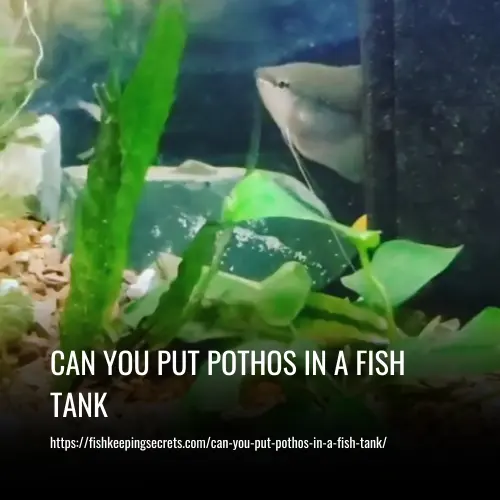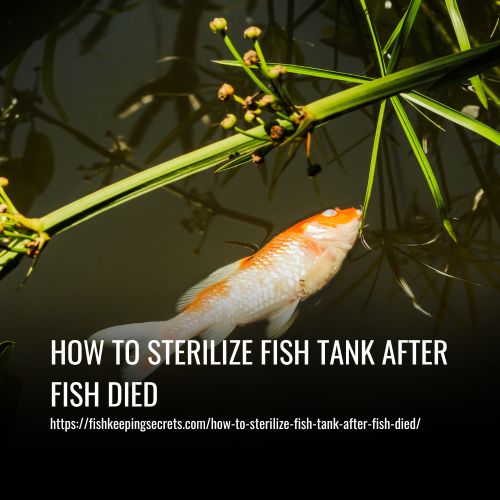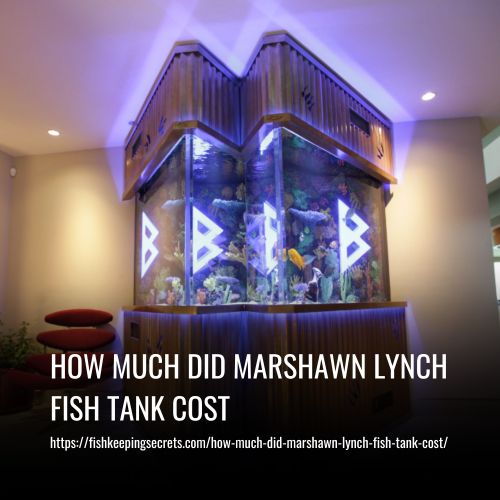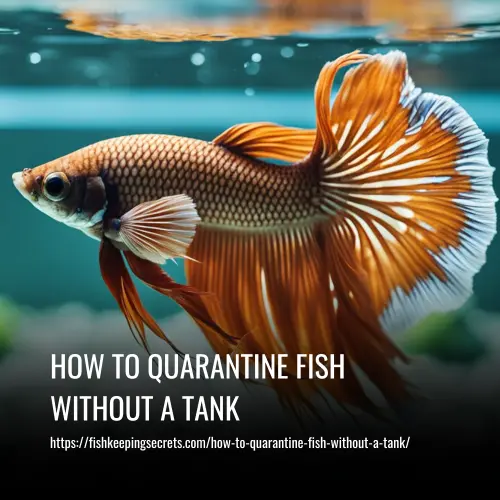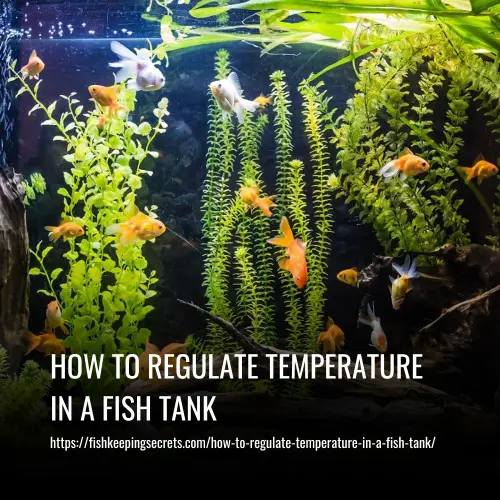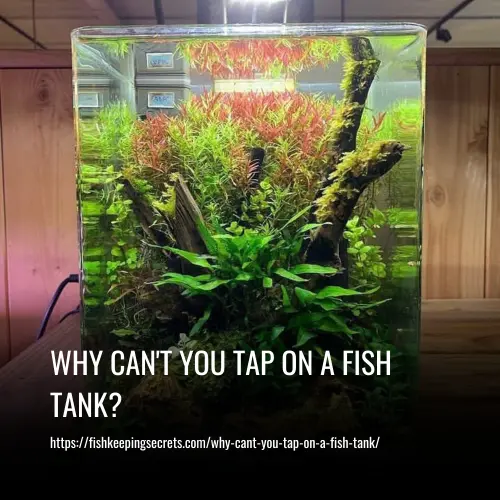How To Clean Fish Tank Gravel Without A Vacuum
This post contains affiliate links. As an Amazon Associate, we earn from qualifying purchases.
If you want a sparkling fish tank that will make everyone say “Wow!”, you’ll need to take some time to clean the gravel in your aquarium. Uneaten food, debris, rotting plants, and fish waste can all build up over time, making your aquarium look less than desirable and even creating a pungent smell.
ToClean Fish Tank Gravel Without A Vacuum, follow these steps:
- Remove All of the Fish.
- Take Out the Gravel and Clean.
- Cleaning Gravel with Live Plants.
- Cleaning Artificial Plants.
- Refill and Plug Back In.
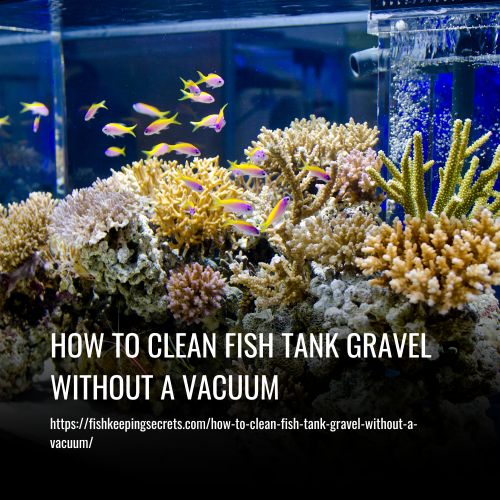
1. Remove All of the Fish:
It is important to first safely move the fish out of the tank before cleaning the gravel without a vacuum, as this process can stir up harmful elements in the form of silt and detritus which could be hazardous if consumed by the fish. To preserve the fish, place them in a bucket or container filled with water from the tank.
This process might not be as convenient as using a vacuum cleaner, but it’s definitely worth it under these circumstances! By taking this necessary step, you’ll keep your fish healthy and thriving in their well-maintained habitat.
2. Take Out the Gravel and Clean:
The first step to properly cleaning a fish tank gravel without a vacuum is to take out some of the gravel. You don’t want to clean all of it, as this will deplete the essential bacteria in your tank that process ammonia into less hazardous nitrates.
Instead, put aside a few cups of gravel and keep them uncleaned. Then, you can take the remaining gravel and place it in a sieve that is placed underneath running tap water. Use plastic gloves while cleaning the gravel thoroughly with your hands and make sure that all the tools used are specifically made for use in fish tanks only so that no external chemicals are transferred in.
When the water runs clear through the sieve, it is time to return the gravel to the tank. Lastly, add back in those few cups of unclean gravel for bacteria re-population purposes. This works best when there are algae growing in your fish tank substrate.
3. Cleaning Gravel with Live Plants:
Cleaning gravel with live plants can be tricky but with the right method, it’s easy to do. To start with, move your fish and all decorations into a separate container so that you can work on the aquarium without disturbing them. Be sure to secure the live plants in the gravel and use a stir stick to gently remove any dirt or debris in between the stones.
Next, remove about one-third to one-half of the dirty water from the tank. This will help preserve some of the healthy bacteria left behind to repopulate afterward. And if you have any algae eaters or snails in your tank, now’s a great time for them to step up to help clean out the gravel too!
4. Cleaning Artificial Plants:
When it comes to cleaning a fish tank, you’ll need to take special care when it comes to artificial plants. Fiddling crabs, for example, can easily destroy living plants, so it’s important that you regularly clean out any artificial plants as well.
Fortunately, artificial plants are very easy to clean and maintain! All you need is some time and patience. Start by plucking the plant from the substrate, making sure not to stir up too much debris in the process. You may need to tip the plant back and forth gently before being able to successfully remove it without incident.
Once you have removed all of the artificial plants from your fish tank it is time for their bathroom session! Carefully rinse each individual plant under a tap with lukewarm water and leave them in a bowl of clean water while you finish tidying up the rest of your fish tank. Finally, remember that algae can build up quickly on aquarium walls – use this opportunity to get rid of any pesky excess algae as well!
5. Refill and Plug Back In:
Once all the debris has been removed from your fish tank gravel, you can start refilling the tank with clean water. Make sure to mix in the withholding amount that contains bacteria that is beneficial for your fish so they can stay healthy and happy. After filling the tank up with fresh water, replace all the decorations, live or artificial plants, rocks, etc. Be sure to add a dechlorinating treatment as well so there is no chlorine remaining from the cleaning process.
Once everything is set up and squared away, plug all the electric equipment back into their outlets and add your fish back into their home! You’ll love how refreshed it looks after going through this all-around cleaning process and your fish will too!
Is It Necessary To Put Gravel In The Tank?
When it comes to choosing the right substrate for your fish tank, there is often debate about whether or not gravel should be used. While it’s not absolutely essential, many aquarium experts recommend adding gravel to the tank as it provides many benefits to both the water quality and the environment of the fish.
The main purpose behind putting gravel in a tank is to create an ideal home for beneficial bacteria that serve as natural filtration systems in a fish tank. Without these colonies of helpful bacteria, you’d have to change the water much more frequently – something that can be time-consuming and costly over time. Gravel also provides a natural environment for the fish, making them feel more at home in their new aquatic home.
Why You Should Clean Aquarium Gravel
Maintaining clean gravel in an aquarium is necessary for optimal water and aquatic life health. Cleaning the substrate is part of routine tank maintenance and it’s important because it removes fish waste, uneaten food, decaying plant matter, and other debris that builds up in the gravel over time. If this debris isn’t removed, it can cause an ammonia spike which will change your water chemistry and make your fish sick – even at lower levels.
The best way to avoid these dangerous ammonia spikes is by performing regular water changes coupled with frequent cleaning of the aquarium gravel. This will help to keep ammonia values at zero so that your precious fish stay happy and healthy!
Some Tips for Cleaning Your Fish Tank
Aquarium gravel is necessary for sustaining the health of your fish tank, as it facilitates a healthy environment for fish.
Fortunately, there are several ways to clean your aquarium gravel without having to resort to a vacuum cleaner. One of the most effective methods is the manual siphon method, which involves using a hose and pump to draw out debris from the substrate.
1. Avoid Using Chemicals:
When it comes to cleaning the gravel or artificial plants in your fish tank, avoiding the use of chemicals is key. Using plain tap water and a clean brush, rag or sponge is all that is needed to effectively remove food particles, brown algae, and fish waste from your plants.
Using chemicals can be detrimental to your fish—they are extremely sensitive to them, so much so that even just exposing a brush or sponge to chemicals can be hazardous for them. For their safety and yours, avoid using any type of chemical when cleaning items in or around your fish tank.
Always use rubber gloves and any sponges/brushes you have set aside specifically for your tank—no matter how tempted you might be to use chemicals! It’s always better safe than sorry when it comes to caring for such sensitive creatures like our finned friends.
2. Protecting Vital Bacteria Is Important:
When it comes to keeping your fish tank clean, one of the most important things you must remember is to protect the vital bacteria colonies that live in it. Not only do these bacteria provide a home for your fish, but they are also essential in converting unsafe waste into less harmful nitrates.
To maintain a balanced ecosystem in your tank, you’ll need some inhabitants that can help with algae control, such as Otocinclus catfish or Twig catfish – both of which have their unique requirements that may include water flow and socialization needs.
Livebearers such as mollies, snails, guppies, platies, and shrimp can maintain the cleanliness of your aquarium.
It’s important to keep in mind that a diverse selection of algae-eaters is crucial for maintaining a healthy balance within your aquarium environment. Before making any selections for your aquarium though, be sure to consult an experienced local aquarium specialist for tailored advice specific to your setup!
How to Clean Fish Tank Rocks and Decorations
Regularly cleaning the rocks and decorations in your aquarium is necessary for its maintenance. Algae, fish waste, and other debris can become embedded in these features, so it is important to clean them periodically.
Start by filling a bucket with rocks and decorations. Clean the dirt off with an algae scraper or a new toothbrush. Then, use old tank water to thoroughly remove any soap residue before returning the items to the tank.
To disinfect your tank decor, you can create a mixture of distilled white vinegar and water (one-part vinegar to one-part water) or use either bleach solution (nine parts water to one part bleach) or hydrogen peroxide solution (four parts water with one part hydrogen peroxide). Ensure you rinse your decorations/rocks with water after use.
Protect the important bacteria
It’s really important to protect the bacteria in your aquarium, as they are responsible for converting harmful ammonia from fish waste into less-harmful nitrates. To ensure that these bacteria colonies remain safe and healthy, it is important to add some algae-eating inhabitants to your tank!
These algae eaters play a significant role in keeping the plants in your tank cleaner for longer. However, you must take care to select them based on the present ecosystem of your aquarium, as each species has its own specific requirements when it comes to oxygen levels, socialization, and water flow needs.
For instance, Otocinclus Catfish is perfect for removing brown algae and can be great members of any community tank; however, Twig Catfish require pristine water conditions with high oxygen levels to thrive.
Finally, consider adding other clean-up inhabitants such as livebearers (e.g., guppies, mollies, and platies), and various species of snails or shrimp; but make sure to consult a local aquarist beforehand so that they can help you find the right ones based on your particular aquarium’s situation.
FAQs
Cleaning aquarium gravel should be done on a regular basis, depending on the size and bioload of your aquarium.
Waste typically accumulates in aquariums that have messy or large species of fish, so the gravel may require cleaning weekly. Conversely, tanks with nano species or a few fish may not necessitate frequent substrate maintenance.
Yes, you should always wash new gravel before adding it to your aquarium. Tap water will contain residues of chlorine, fluoride, heavy metals, and other pollutants that are toxic to your fish. Be sure to rinse the gravel well before adding it to the tank to get rid of any debris or dust.
Fish tank gravel should be cleaned at least twice a month. This includes vacuuming the gravel to remove fish waste and any other debris, as well as performing a partial water change and replacing one-third of the tank’s water.
Signs of ammonia stress in a fish tank include lazy or erratic swimming behaviors, loss of appetite, faded colors, rapid breathing, and clamped fins. Additionally, a characteristic sign is gill erosion which can cause discoloration and oozing sores on the fish’s body.
Conclusion:
Cleaning fish tank gravel without a vacuum may seem intimidating at first, but with the proper tools and techniques in hand, the process can be relatively simple. You don’t have to worry about the hassle and mess of using a vacuum cleaner when cleaning your aquarium substrate—instead, you can employ other tools like a siphon, net, or strainer to achieve great results without any extra effort.
With a bit of effort and patience, cleaning your fish tank gravel should no longer be something that causes you stress.

